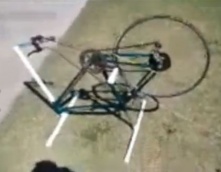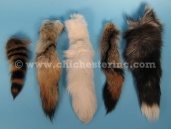Coursing in the SCA
Contents
Existing Coursing Groups:
Aethelmearc - [[1]] - lots of info, including basic concept of building a lure course - "In an open area, pullies are laid out in a gentle shape (usually a “P” or a lightbulb shape). Once laid out, the pullies are threaded with masons thread, and hooked up to a very space age looking unit, called a “Hand Cranked Lure Machine.” This is the back half of a 10 or 5 speed bike sawed off and mounted to a solid structure. The thread is then threaded through the tire of the bike (the rubber has been removed). A white standard grocery bag (the “Lure”) is attached to the thread, and the pedal is cranked, moving the lure around the pully system at speeds up to 40 miles per hour."
Artemesia - [[2]]
Meridian Coursing Guild - [[3]] (allow any dogs to course - looks like one-at-a-time)
Trimaris - [[4]] (seems to have more period documentation about coursing)
Gulf Wars - [[5]] (requires like coursing with like to avoid injury, in 2013 only allowed Greyhounds, Italian Greyhounds, Irish Wolfhounds, Scottish Deerhounds, Borzoi and Salukis; others may be allowed with documentation if enough of that breed participate. Apparently include agility and tracking type activity under what they call coursing. The equipment is made to look more like stuff one would encounter in a forest hunting situation...)
Florilegium - coursing rules - http:''www.florilegium.org/?http:''www.florilegium.org/files/ANIMALS/coursing-SCA-msg.html
There may have been an article in TI several years ago which included plans for a hand-cranked rig based in a bicycle. It also included a design for a slip collar and a drawing of how it would sit on the dog -- complete with depiction of the long wet tongue to be avoided?
It would be super cool to have a period wooden hand-crank rig.
When [Logan] watched coursing at Estrella one year, it was explained... that only one dog went at a time as a safety measure for the dog. It was the responsibility of the dog owner to crank the handle that moved the cord that held the lure. That way, if the dog got tangled in the cord, it was the owner of the dog in control, and they could stop cranking so the dog would not be harmed. They could also control the speed of the lure, trying to keep the dog focused on it, and not all the other surrounding stimuli. If the dog lost track of the lure, the owner could back it up until the dog saw it again, or have it jiggle back and forth to make it more obvious.
Lure Coursing in the AKC - [[6]]
Set-up and Equipment
Lure Coursing 101 - [[7]] - there are two basic types of lure machines, drag lure and continuous line. Drag lure set-ups are the simplest. You pull the string out along your planned course, drag the string with lure back into the machine with the dog in (hopefully) hot pursuit, then pull the string back out again to reset for the next run while the dog rests. Continuous loop set-ups are ready to go again right away because the string is tied in a continous loop, so there's faster turn around if there are a lot of dogs to course. However, it's more tricking to wrestle a huge continous loop of string, both for set-up and take down, required a separate wind-up reel for the string. (In drag lure set-ups, the dragging machine functions as it's own winde-up reel.) [[8]]
Machines:
| Nice | 
|
Wicked Coursing - [[9]] (some nice, portable, self-contained units, for a price)
Injoy - [[10]]
Pulleys:
- Different types of pulleys - [[11]]
Lures:
Maybe not just a plastic bag...
Possibilities include: [[12]] or [[13]] or [[14]]
Courses:
Wicked Courses has some good layout info and sample courses - [[15]]
New Ideas
Options:
- Run for fun - no points, no times.
- Run for time - can do one dog at a time, just need a stopwatch or a period timekeeping device (waterclock, etc.)
- Run for points - can do two dogs at a time using variation of period rules or, maybe, one dog at a time with further modification of period rules (obviously owners should not be running the lure in these rules)
Points
| Two dogs | One dog | |
| Turn | One turn to the dog in the lead at the turn (if the dog is close enough - within, say, a body length? or close enough that the other dog cuts ahead of him/her?) | One turn to the dog at the turn if it's close enough (point voided if lure is observed to be slowed down to allow the dog to catch up artificially?) |
| First turn | Double turn points to the dog in the lead at the first turn (with closeness criteria as above?) | Double turn points if the dog is close enough at the first turn |
| Go-by | Double turn points to a dog who passes the other from behind on a straightaway | n/a |
| Coat | Earned if dog is in the lead two turns in a row | Earned if dog is close enough two turns in a row... |
| Fall | One turn given to a dog that falls, but gets up and finishes the chase | Same, but see penalty for re-engaging the dog below |
| Tripping | One turn to the dog close enough that he reaches and "trips" the lure | Same |
| Catching the hare | Two turns to the dog that manages to catch and stop the lure (should never happen with line coursing properly conducted?) | Same |
| Wrench | no points for gentle turns less than 90-degrees | same |
| Finishing | if one dog doesn't chase all the way to the covert, the dog that finishes the whole course will win even if with a lower score | A turn is subtracted every time the lure is stopped or slowed down to re-engage the dog |
| (i.e. not if a lure handler is just making speed adjustments from inexperience or equipment problems). | ||
| Additional penalty if dog doesn't finish even with attempts to re-engage?? | ||
| First and last turn tie-breaker | if both dogs get an equal number of turns and nothing else distinguishes one over the other, the dog that made the first and last turns will win | Extra point given if dog is close at both the first and last turns |
| Catching the hare tie-breaker | All else being equal, the dog that catches the hare wins, even if the other dog got the first turn. | Same |
| Covert tie-breaker | If neither dog scores a turn (only applies if closeness counts), the one in the lead at the end wins. | If the dog doesn't score any other turns, it at least gets one "turn" for coursing all the way to the end of the course |
| The winning dog is the one with the most turn and coats? | ||
| Should coats be converted into turns (how many)? Only convert if necessary to compare two dogs (i.e. 2 turns vs. 1 turn and a coat not necessary, but 2 turns vs. 1 coat need a conversion?) | ||
| Ignore coats all together and just give double/triple points for those feats instead? |
Coats are controversial and confusing. My best guess is that a coat should be the equivalent of 3 turns, since it is described as "turn the hare, serve himself, and turn her again" i.e. 2 turns in a row which is actually two turns with a go-by (because the dog that forces a turn usually falls behind the other dog as a result of the turn). Sources quoting the later version Norfolk rules state after the above description that "a cote is esteemed two turns", but that doesn't make any sense with the description of how a coat is earned. It also doesn't make sense with the statement that "those two turns shall be as much as a coat" in other versions of the rules, which implies that a coat is somehow more that two normal turns.
